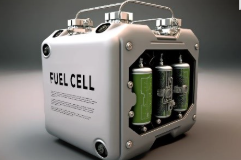What are the NEC 2023 requirements for Essential Electrical System (EES) power sources?
517.30(B) Power Sources for the EES
Overview
| Power interruptions are unacceptable in critical infrastructures like hospitals and healthcare facilities. To ensure continuous operation, these facilities must be equipped with Essential Electrical Systems (EES) to serve as backup power options. In the 2023 edition, NEC Section 517.30(B) was expanded to give end-users the permission to include the latest alternative power options, such as utility power supplies, energy storage devices, and microgrids in their EES. These additions offer a wider range of technology choices for end-users, enabling them to select systems based on their specific requirements. |  |
Applying the 2023 Code
Essential Electrical Systems (EES) are specifically designed to supply power to critical loads essential for life safety, emergency operations, and hazard mitigation in the event of normal power source failures. These systems redirect power feeds from standard sources to alternative supplies such as generators, battery banks, and similar devices. EES systems serve as vital components in power-critical infrastructures, particularly in places like hospitals where uninterrupted power is vital for safeguarding human life.
NEC Section 517.30(B) outlines the requirements for the various power sources permitted for use within EES systems of different health care facilities. In previous editions, this section only allowed for the use of generating units, fuel cell systems, and battery systems as alternative supply devices for EES. However, this section was revised in NEC 2023 due to advancements in energy storage and distribution technologies. The updated section now permits a wider range of devices for supplying power in EES systems, including utility supplies, generating units, fuel cell systems, various energy storage devices, and other innovative options like microgrids. These revisions were made to expand the categories of devices available for supplying power in EES systems, thereby enhancing the reliability of critical infrastructures such as hospitals.
What’s New for the 2023 NEC?
The table below presents a comparison between the 2020 NEC and the 2023 NEC regarding Section 517.30(B).
| 2020 NEC | 2023 NEC |
| 517.30 Sources of Power
(B) Types of Power Sources (1) Generating Units Where the normal source consists of generating units on the premises, the alternate source shall be either another generating set or an external utility service. [99:6.7.1.2.3] (2) Fuel Cell Systems Fuel cell systems shall be permitted to serve as the alternate source for all or part of an essential electrical system, provided the following conditions apply: [99:6.7.1.4]
Informational Note: For information on installation of stationary fuel cells, see NFPA 853-2015, Standard for the Installation of Stationary Fuel Cell Power Systems.
(3) Battery Systems Battery systems shall be permitted to serve as the alternate source for all or part of an essential electrical system. Informational Note: For information on installation of battery systems, see NFPA 111-2019, Standard on Stored Electrical Energy Emergency and Standby Power Systems. |
517.30 Sources of Power
(B) Power Sources for the EES Power sources for the EES shall be permitted to be any of those specified in 517.30(B)(1) through (B)(5). (1) Utility Supply Power Where utility power is used as the normal source, utility power shall not be used as the alternate source unless permitted elsewhere in this article. Informational Note: See 517.35 and 517.45 for essential system loads that can be supplied from dual sources of utility supply power. (2) Generating Units (3) Fuel Cell Systems Fuel cell systems shall be permitted to serve as the alternate power source for all or part of an EES. [99:6.7.1.5.1]
Informational Note: See NFPA 853-2020, Standard for the Installation of Stationary Fuel Cell Power Systems, for information on installation of stationary fuel cells. (4) Energy Storage Systems Energy storage systems shall be permitted to serve as the alternate source for all or part of an EES. Informational Note: See NFPA 111-2022, Standard on Stored Electrical Energy Emergency and Standby Power Systems, for information on the installation of energy storage systems. (5) Health Care Microgrid EES shall be permitted to be supplied by a health care microgrid that also supplies nonessential loads. The health care microgrid shall be permitted to share distributed resources with the normal system. Health care microgrid systems shall be designed with sufficient reliability to provide effective facility operation consistent with the facility emergency operations plan. Health care microgrid system components shall not be compromised by failure of the normal source. Informational Note: See NFPA 99-2021, Health Care Facilities Code, for information on health care microgrids. |
